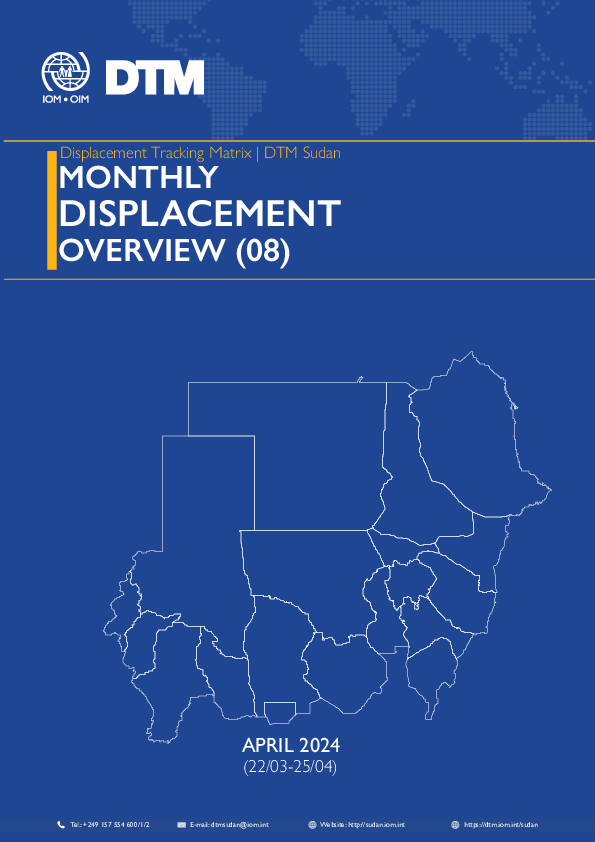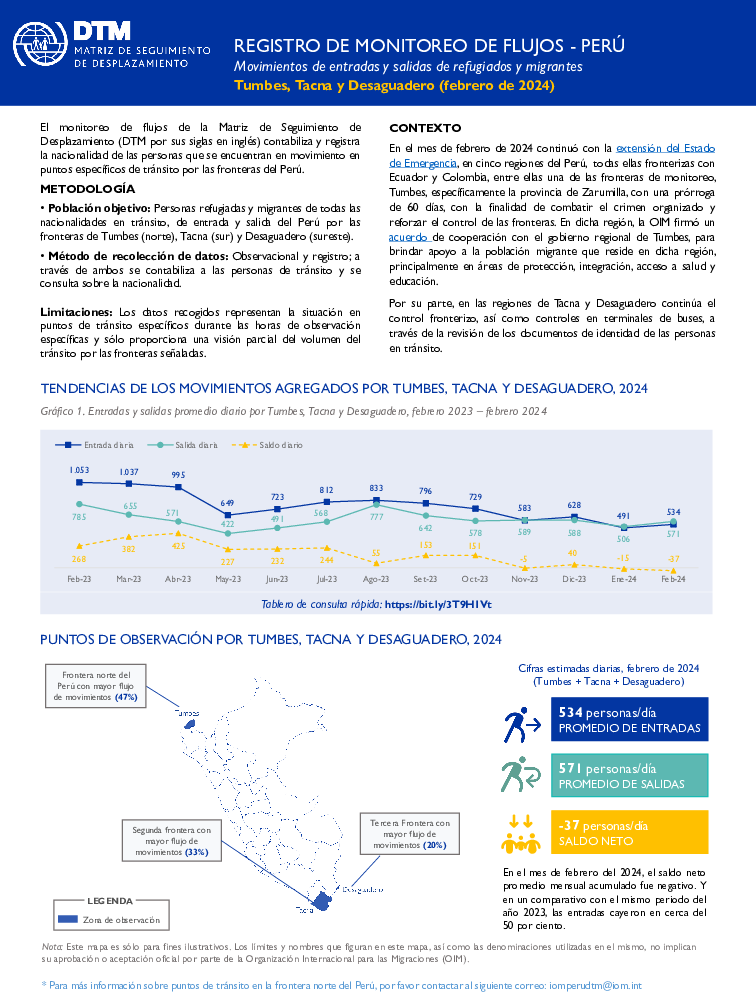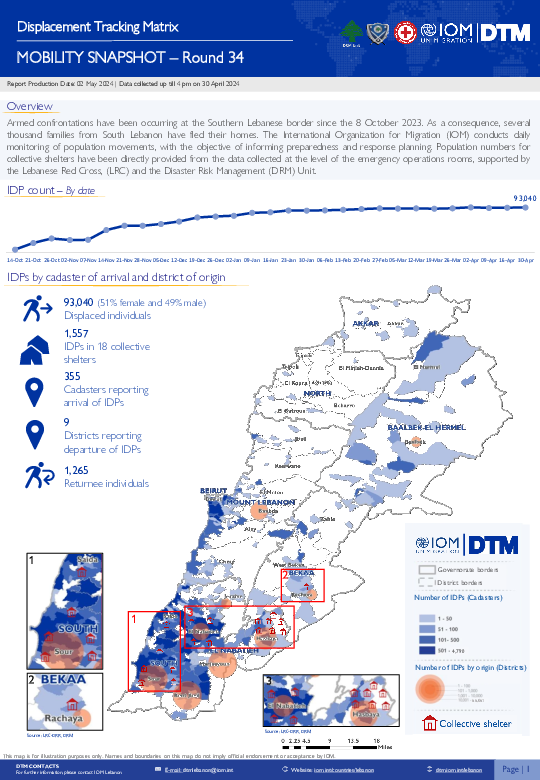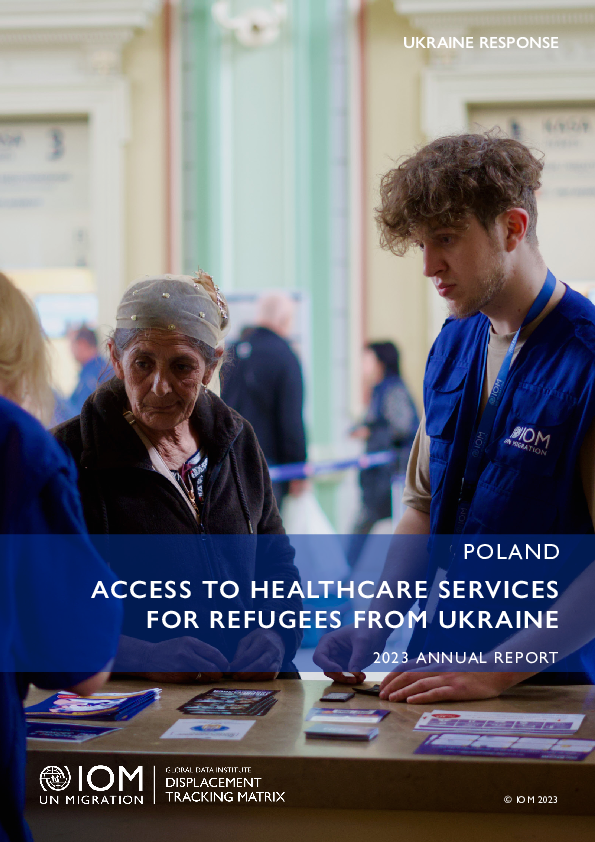-
Countries
-
Data and Analysis
-
Special Focus
-
Crisis Responses
Assessment Report
In 2023, IOM’s Displacement Tracking Matrix (DTM) collected data on the Needs, Intentions, and Integration Challenges of refugees from Ukraine in 11 countries in Central and Eastern Europe that are part of the IOM’s Regional Ukraine Response: Belarus, Bulgaria, Czechia, Estonia, Hungary, Latvia, Lithuania, Poland, Romania, Republic of Moldova, and Slovakia.
This report presents the findings of surveys with Ukrainian citizens related to their employment profiles and job prospects in the countries hosting the displaced respondents. The analysis focuses on these respondents who are of working age (18 to 64 years old), are active on the labour market (either working or looking for work), and intend to remain in the country where the survey took place for the foreseeable future.

Contact
DTM Türkiye, mpmturkey@iom.int
Language
English
Location
Republic of Türkiye
Period Covered
Jan 01 2024
Mar 31 2024
Activity
- Flow Monitoring
- Migrants presence
According to the latest available figures from the Turkish Presidency of Migration Management (PMM), there are more than 4.5 million foreign nationals present in Turkish territory, 3.4 million of whom are seeking international protection. Most are Syrians (3,120,430 individuals) who are granted temporary protection status. In addition, international protection applicants from countries including Iraq, Afghanistan and the Islamic Republic of Iran constitute another group of foreign nationals. According to PMM, there were 19,017 international protection applicants present in Türkiye in 2023, published annually.
Moreover, according to United Nations High Commissioner for Refugees (UNHCR), there were 296,6853 refugees and asylum-seekers in Türkiye as of 2023. Since December 2023 the number of Syrians residing in camps has decreased by 4,085.
In addition, there are 1,129,958 foreign nationals present in Türkiye, holding residence permits. Compared to the fourth quarter of 2023, this is an increase of 22,926 individuals. According to PMM, 58,760 migrants in irregular situation of different nationalities were apprehended in Türkiye in the first quarter. This figure was 88,437 in the previous reporting period (Q4) of 2023.

Contact
dtmsupport@iom.int
Language
English
Location
Global
Period Covered
Jan 01 2022
Dec 31 2023
Activity
- Survey
- Flow Monitoring Survey
- Flow Monitoring
The COVID-19 pandemic marked an unprecedented shock to human mobility, shuttering borders and restricting movements in ways not seen in our lifetime. This report reflects the first attempt to assess how human movements has changed in the wake of this seismic event, by analysing Flow Monitoring data from the International Organization for Migration that surveys migrants at formal and informal border crossings. This report sketches how movements have fully recovered from pandemic-era restrictions and how they are being shaped by climate and displacement shocks through seven cases studies that cover a wide range of migrant destinations. This report is the third in a three-part series on the impact of COVID-19 on human mobility.

Contact
DTM Libya, DTMLibya@iom.int
Language
English
Location
Libya
Snapshot Date
Apr 30 2024
Activity
- Other
- Survey
- Flow Monitoring Survey
The findings of this study confirm that lacking travel documents is a contributing and exacerbating factor driving vulnerability among migrants in Libya. The data points to migrants’ experiences including whether they are able to obtain a work permit or a passport being strongly influenced by a range of factors including the conditions in the country of origin (e.g. ease of access to government-recognised ID), migration drivers (e.g. war and conflict hindering migrants’ ability to obtain the necessary travel documents), migration intentions (e.g. those who do not intend to stay in Libya are less likely to possess a travel documents) and means of transportation used to reach Libya (e.g. those having traveled by air are more likely to possess travel documents).
Overall, nine in ten migrants interviewed by DTM in November and December 2023 in Libya were without a work permit. Moreover, nearly two thirds of migrants did not possess a passport, a key precondition in obtaining a work permit.

Contact
DTM Sudan, SudanDTM@iom.int
Language
English
Location
Sudan
Period Covered
Mar 22 2024
Apr 25 2024
Activity
- Mobility Tracking
- Baseline Assessment
Overview
IOM DTM Sudan presents its eighth Monthly Displacement Overview. This publication provides an account of Sudan’s displacement context since 15 April 2023 – outlining population mobility and displacement, as well as the present and evolving needs of IDPs across Sudan. It provides further contextual analysis for all 18 states for the period between 22 March and 25 April 2024.
Rationale
Recognizing the need for more detailed insights into the IDP situation, including the priority needs, access to services, movement intentions, and demographic breakdowns of the affected population, DTM Sudan has undertaken a comprehensive review of our data collection tool. In collaboration with a wide range of internal and external stakeholders, we have developed a new tool to better inform humanitarian response operations, aligning with the DTM global methodology. Leveraging our extensive network of approximately 367 field-based enumerators and a robust system of over 3,698 key informants across the country, DTM gathered data on IDPs across 7,251 locations, in 182 of Sudan’s 189 localities, across all of Sudan’s 18 states, during March 2024.
Key Findings
- DTM Sudan estimates that 6,786,816 individuals (1,352,268 households) have been recently internally displaced as of 25 April 2024.
- IOM DTM also reports that an estimated 2,075,369 mixed cross-border movements have been made into neighbouring countries.
- Since 15 April 2023, 46 per cent of the IDP caseload sought refuge in the Darfur and Kordofan regions, whereas 53 per cent were observed across the Northern, Eastern, and Central states.
- The majority of the IDP caseload (65%) were seeking shelter with the host community.
- While food remains the highest priority need, health and non-food items are also growing concerns.

Contact
DTM Peru, IOMDTMPeru@iom.int
Language
English
Location
Peru
Period Covered
Feb 01 2024
Feb 29 2024
Activity
- Flow Monitoring
En el mes de febrero de 2024 continuó con la extensión del Estado de Emergencia, en cinco regiones del Perú, todas ellas fronterizas con Ecuador y Colombia, entre ellas una de las fronteras de monitoreo, Tumbes, específicamente la provincia de Zarumilla, con una prórroga de 60 días, con la finalidad de combatir el crimen organizado y reforzar el control de las fronteras. En dicha región, la OIM firmó un acuerdo de cooperación con el gobierno regional de Tumbes, para brindar apoyo a la población migrante que reside en dicha región, principalmente en áreas de protección, integración, acceso a salud y educación. Por su parte, en las regiones de Tacna y Desaguadero continúa el control fronterizo, así como controles en terminales de buses, a través de la revisión de los documentos de identidad de las personas en tránsito.

Contact
dtmlebanon@iom.int
Language
English
Location
Lebanon
Period Covered
Oct 10 2023
Apr 30 2024
Activity
- Mobility Tracking
- Baseline Assessment
Since October 8 there has been an increase in cross-border incidents between Israel and Lebanon, resulting in the displacement of people both within the South and elsewhere within the country. Since October 10, the Displacement Tracking Matrix (DTM) has been conducting the daily monitoring of population movements. The objective of the exercise is to inform preparedness and response planning.

Contact
DTM Libya, DTMLibya@iom.int
Language
English
Location
Libya
Period Covered
Jan 01 2024
Feb 29 2024
Activity
- Mobility Tracking
- Baseline Assessment
The number of migrants in Libya has been increasing since September 2023 and stands at its highest since DTM started operating in Libya. Previously, the number of migrants in Libya had declined as a result of the COVID-19 pandemic and its socioeconomic impact. Some factors that may explain the increase in the number of migrants includes a rise in the number of Sudanese nationals, particularly in Alkufra and other locations in eastern Libya because of the ongoing conflict in their country of origin. In parallel, DTM Libya also observed an increase in the number of nationals, particularly from Egypt and Sudan, in some municipalities in the east and southwest as a result of greater livelihood opportunities, including in the construction and agricultural sectors.

Contact
DTM Europe, DTMMediterranean@iom.int
Language
English
Location
Poland
Period Covered
Jan 01 2023
Dec 31 2023
Activity
- Survey
Key findings:
- 20% of respondents live with people with specific needs or serious medical conditions
- Priority needs include: health care services (29%), medication (25%) and mental health support (6%)
- Specific needs* include chronic diseases or serious medical conditions (28%), visual impairment (15%), and difficulty walking (7%)
- Barriers to healthcare include: language barrier (32%), long queues (29%), unavailable services (28%), lack of transport (13%) and lack of documents (9%)
- 65% of respondents pay for healthcare services or medicines

Contact
DTM Libya, DTMLibya@iom.int
Language
English
Location
Libya
Snapshot Date
Apr 06 2024
Activity
- Other
This Rapid Needs Assessment provides a snapshot of the situation of the Sudanese nationals who arrived in the municipality of Tobruk after the onset of conflict in Sudan in April 2023. DTM Libya conducted a brief assessment on 3 - 6 April 2024 to shed light on the situation of Sudanese nationals in the municipality of Tobruk who arrived after the onset of conflict in Sudan in April 2023. While most are coming directly from Sudan and arriving in Alkufra, a minority are traveling from Egypt and arriving in Tobruk.
Pagination
- Previous page
- Page 32
- Next page

